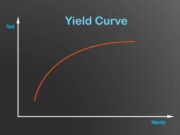Charitable contributions deduction is a tax incentive offered to individuals that donate sums to a recognized charity. The tax deduction allows taxpayers to reduce tax amount, which is due to the tax authority. Contributions to the charity can be either made in the form of property or cash. In the US, the details of allowable deductions are listed on Schedule A of the IRS form 1040.
Details of Charitable Contributions Deduction
Charitable contributions deductions can be claimed for all payments made prior to the closing of the tax year. In case the contribution is made in the form of a property, the fair market value of the donated property can be deducted. Rules pertaining to calculating fair market value are explained in IRS Publication 561.
Qualified contributions that can be deducted from the income statement should fulfill criteria mentioned in internal revenue code section 170 (c). Some of the qualified charitable organizations in the US include the following.
- Domestic fraternal society that operates under the lodge system,
- Nonprofit cemetery company if the donations are donated to care of the cemetery as a whole.
- A trust, community chest, foundation, or fund that is created, organized, and operated solely for religious, charitable, educational, literary, or scientific purposes, or for the prevention of cruelty to animals and children.
- A church or other religious organization
- A nonprofit fire fighting firm
- A federal, state, or local civil defense organization
- An organization created for war veterans
IRS rules in the US specify that individuals should itemize their deductions if they have made charitable contribution in a particular year. In general an individual can deduct a maximum of 50% of the adjusted gross income that is computed by excluding net operating loss carry-backs. Charitable contributions made to certain veterans organizations, private foundations, cemetery organization, and fraternal societies are subject to a limit of 30% deductions from the adjusted gross income. Contributions to every public charity, private operating foundation, and certain private foundations are subject to 50% limitation. The 30% limit is applied to private foundation, domestic fraternal society, and those mentioned in section 170 (c) of the internal revenues code. IRS’s Exempt Organizations Select Check: Deductibility Status Codes contains more information about type of charity organization and deduction limitation.
Further Reading
- Economic theories of nonprofit organizations – link.springer.com [PDF]
- The income tax and charitable contributions – www.jstor.org [PDF]
- Lottery expenses and charitable contributions–Taiwan's experience – www.tandfonline.com [PDF]
- Economic aspects of the personal income tax treatment of charitable contributions – www.jstor.org [PDF]
- Prestige, charitable deductions and other determinants of alumni giving: Evidence from a highly selective liberal arts college – www.sciencedirect.com [PDF]
- The Marketing of Philanthropy and the Charitable Contributions Deduction; Integrating Theories for the Deduction and Tax Exemption – heinonline.org [PDF]
- The market for charitable giving – www.aeaweb.org [PDF]
- The case for a charitable contributions deduction – www.jstor.org [PDF]
- After‐life consumption and charitable giving – onlinelibrary.wiley.com [PDF]


































